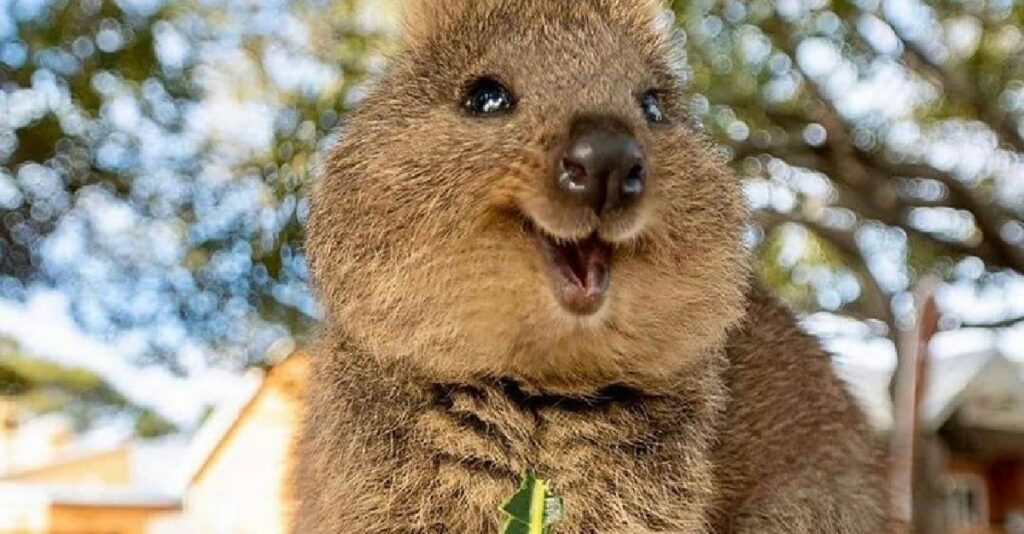
Why are quokkas regarded as the world’s happiest animals?
While koalas and kangaroos are well known, what is a quokka? The native land of this friendly marsupial is Australia. The quokka has gained the moniker “the world’s happiest animal” due to its placid demeanor, friendliness toward humans, and smiling countenance.
Where are they found?
The size of cats, quokas are hairy, gray-brown animals. They eat local vegetation and carry their young in a pouch.
On the sparsely populated Rottnest Island, quokkas are thriving despite being threatened on the Australian mainland. The word for “rat’s nest” in German is where the name originates. The island was named after quokkas because the early German residents on the island thought they were no better than rats.
On the island, there are almost 14,000 quokkas. They typically reside in well-tended gardens.
Vulnerable to Extinction
Quokkas are currently thought to be in danger of going extinct due to habitat devastation brought on by what we refer to as “progress”.
Their population is between 8,000 and 12,000 people. Unfortunately, the fact that they are all in the same place makes them much more vulnerable. The area’s only natural predators are snakes, which is a wonderful thing. Their reduction has also been attributed to bushfires.
Being the happiest animal on earth has drawbacks as well. They don’t mind being in close proximity to predators like dingoes, foxes, dogs, and huge birds because they are highly amiable and trustworthy. Quokkas, however, are always their final meal because these animals are ferocious predators.
Selfie Stardom
Despite being considered “vulnerable,” this adorable creature is not afraid of people. People have rapidly warmed up to quokkas since they are social and personable tiny marsupials. There has been a significant increase in visitors to Rottnest Island who wish to interact with the cute animals. Taking “quokka selfies” is a favorite past time of visitors to Australia.
Quokkas experienced a surge in popularity in 2013, particularly after being featured in a Huffington Post piece. Selfies were taken with them, and these quickly became popular online. These creatures don’t fear people, therefore it appears like they are also grinning for the camera. They are known as the happiest animal on earth thanks to the selfie craze. Many people opt to post their images on social media.
In fact, because it would endanger the quokka population, conservation experts have raised concern about allowing too many people to visit the island. The popularity of this adorable creature and the Australian government’s efforts to conserve it were both covered in a report by National Geographic Wild.
They won’t flee if someone approaches them, so feel free. Please be warned, though, that you are not permitted to handle them in any way if you spot one. Additionally, you should refrain from giving them human food because they can become ill. For infractions, there is a $300 minimum fine, a $50,000 maximum fine, and even a five-year prison sentence that might be imposed.
Cute as a Cute Can Be
They gained popularity recently because of their upbeat demeanor. They have this look that gives the impression that they are always grinning. Perhaps you can look at their smiles when you’re feeling down, and it will make your day better.
Quokkas have existed for a while. They were indeed among the earliest Australian mammals that Europeans found. When he described seeing a wild cat on Rottnest Island in 1658, the Dutch mariner Samuel Volckertzoon became the first to write about it. Willen de Vlamingh mistook them for enormous rats in 1696 as well. Because rattennest meaning rat nest in Dutch, the location was given the name Rotte nest.
Grass and leaves from tiny trees and bushes make up most of a quokka’s diet. Succulent plants are also beloved by them because they retain moisture. When there is a lack of water, they are ideal. Due to the abundance of food supplies in the area, these animals can survive on a small island.
They have pouches as well because they are marsupials. Like kangaroos, they also carry their offspring in pouches. However, they enjoy climbing trees and bushes, unlike other marsupials. Their height accounts for this. They can move up trees because they are small enough to do so.
